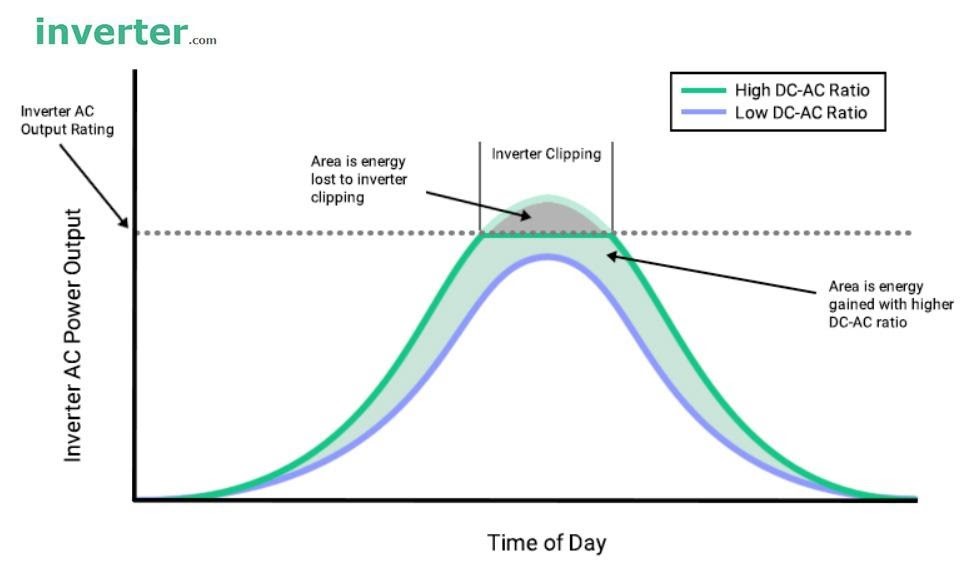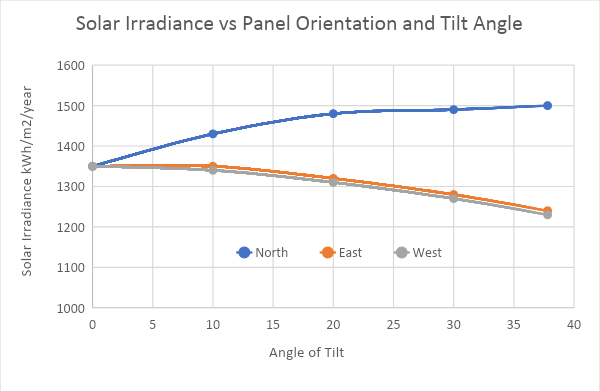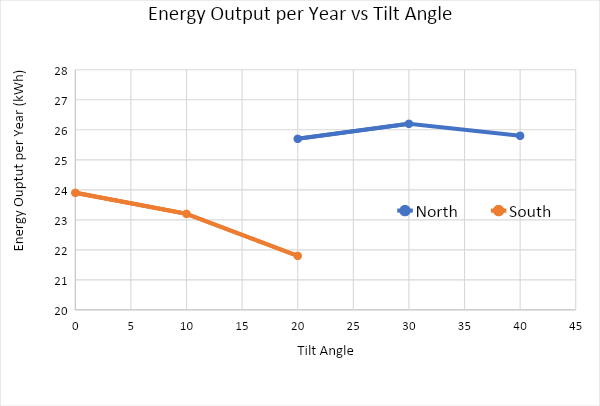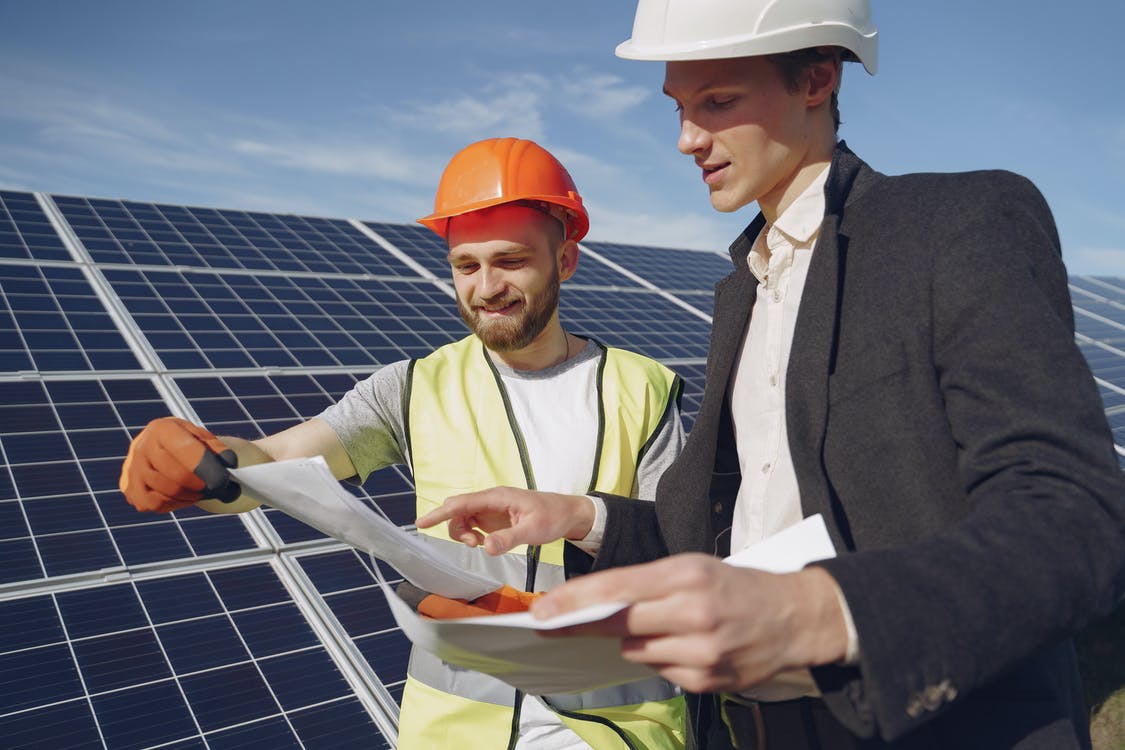The Challenges of Commercial Solar Installations
Commercial solar has many advantages, including saving money, gaining energy independence, improving the value of your building and presenting your company as being environmentally responsible. These and other benefits are discussed more fully here.
However commercial solar installations have more complexities and challenges compared to residential installations. For starters, commercial systems are usually bigger and therefore more costly. Since the investment is typically much larger the economics become more serious. These economics can be more complicated to figure out than for residential systems. This is because commercial billing can be complex, especially with different demand charges on top of tariffs, feed-in tariffs, and fixed charges. We have found some solar companies exaggerate the savings and ROI (Return On Investment) analysis. Other solar companies genuinely try to do it but cannot deliver an accurate analysis. This is because many data and factors are involved in a comprehensive commercial solar PV feasibility analysis.
Secondly, depending on your system size, the application and approval process with electricity authorities can be much more involved and take much longer than the case for residential installations. Commercial solar installations greater than 30 kW need proper engineering work done and also a grid protection system. It is very important that this is done properly.
Thirdly, every commercial or industrial site is different. Combined with the myriads of products that are evolving quickly in the market, comparing apples with apples is difficult and time-consuming. We have seen a price difference of almost 30% between solar quotes. What if you pay too much? Or even worse, what if you pay too little for a system with ongoing problems and getting no support?
Lastly, many solar companies have come and gone. Most residential solar companies also have been trying to sell commercial solar without adequate engineering and project capabilities.
Therefore, it’s best to engage a third-party engineer or specialist solar energy analyst first before committing to any purchase. Click 'Ask A Question' to connect with an engineer.
This article will help pilot you through all this and get you a great outcome that suits your business.
How to Identify Trustworthy Commercial Solar Companies
Here are some basic checks you can apply to companies offering commercial solar installations.
- Has the company/ installer been operating for more than five years?
- Does the company have Australia-based technical support? You can test this by speaking directly with the person before buying
- Ask to talk to previous customers to enquire about the service pre and post-installation. Were there any issues with the system? Did the company follow them up? How was their communication? Don't just rely on online testimonials.
- The company should visit your premises to establish what your site needs and your energy load profile.
- Check your system design is by a CEC (Clean Energy Council) accredited system designer and that it suits your needs and your budget.
- Ask who will install the system. Check for CEC installer accreditation.
- Does the company have experts that can do engineering work if required?
- Does the company have experts that can analyse your consumption, solar output, and all the complicated commercial billing options from electricity suppliers, to get you the most from your system?
Avoid Bad Solar Installers (Companies)
If a solar installer (company) shows these telltale signs of being dodgy, unreliable or incapable, then run the other way:
- The saving or payback calculation does not make sense or overstated
- It takes more than a couple of days to respond to your questions - If the service is bad before you pay them, then what about after you pay them?
- Unable to provide commercial solar project references whom you can call
- Online reviews such as Google or facebook show a few genuine negative reviews - beware of fake reviews
- Unable to answer basic financial and technical questions (such as design, tariff analysis and the installation process)
- They have not been installing for more than 4 years
What Good Commercial Solar Companies (Installers) Understand
If a solar company can discuss these aspects below well, then that company is worth talking to:
- Financial factors behind commercial solar
- Commercial solar design issues
- Dealing with different commercial solar sizes, including STC and LGC systems as well as grid protection requirements
- Different methods of financing a commercial solar installation
- Clarity on contract and scope exclusions and inclusions
The above are elaborated further below.
Commercial Solar System - Payback, ROI and Financial Factors
Payback.
The payback period (payback for short) is probably the most quoted financial indicator for commercial solar installations. It is the time needed to break even after the initial investment of upfront capital. While payback can be a useful indicator for risk (e.g., a faster payback period has less exposure to risk in future changes to electricity feed-in-tariffs) it does not provide an overall picture of the investment. For example, two projects might have the same payback period, say 4 years, but one might have a lifetime of only 6 years whereas the other might have a lifetime of 20 years. Clearly, the project with a 20-year life might represent a better investment. Asset lifetime is particularly important for solar projects, where performance warranties on panels can be 25-30 years.
Generally, great commercial projects can deliver payback periods of 5.5 years or even less. And remember, after this, there are at least 20 more years of putting money in the bank.
Return on Investment (ROI)
ROI is a better indicator of the value of commercial solar investment and can be used to compare investment in commercial solar with investments in other areas. Unlike payback, ROI takes into account revenue over the lifetime of the asset and gives a time value to money.
In another blog article we deal with ROI in more detail https://freeengineer.com.au/blog/post/should-you-invest-shares-property-your-companys-capital-projects-or-solar. Using reasonable assumptions, we estimate a typical gross % pa ROI of about 21% for commercial solar installations. This compares to 2-8% returns for other major asset classes.
The estimated ROI for your commercial solar installation is a very important financial indicator and needs to be calculated properly, taking into account a range of factors.
Energy Independence/Hedging
One of the biggest advantages of commercial solar is that it gives you more energy independence and more control and certainty over your future cost of energy. No longer are you at the total mercy of electricity providers. Having a long-term energy-producing asset effectively allows the owner to hedge against electricity price rises for long into the future.
The more solar power you have, the better your energy independence and future protection.
Variables Affecting Financial Factors
Consumption
Consumption is the pattern of your electricity use, i.e., how much electricity you use and when you use it. Consumption plays a key role in the economics of a commercial solar installation.
Two of the main ways you make revenue from a solar system are:
- Using your solar electricity instead of grid electricity
- Feeding electricity back to the grid
Typically, the cost of grid electricity is much higher than feed-in tariffs. For example, you might be paying 20c per kWh for grid electricity, but you might only get 8c per kWh for electricity back to the grid.
The figure below shows a typical solar output during the day, overlaid by two examples of consumption. For customer 1, consumption is quite well-matched with the solar output. In this example, about 80% of the solar output replaces grid electricity and 20% is fed back to the grid. For the second customer, consumption is not well-matched with the solar output. About 40% of the solar output replaces grid electricity and about 60% is fed back to the grid.

To show how much this can affect economics, let’s consider a commercial solar system that outputs 100 MWh of energy per year. Grid electricity is supplied at 20c/kWh and the feed-in tariff is 8c/kWh.
Customer 1 saves $16,000 per year by using less grid electricity and gets $1,600 per year from feed-in, giving a total benefit of $17,600 per year. Customer 2 saves $8,000 per year by using less grid electricity and gets $4,800 per year from feed-in, giving a total benefit of $12,800 per year. Obviously, customer 1 will have both significantly shorter payback and a much better ROI than customer 2.
Consumption relative to solar output can also significantly affect demand charges if you have them.
Analysing consumption is a very important part of setting up a commercial solar installation. This analysis may lead to changes in the way to use your power to make your solar work better for you and is a critical part of getting a proper economic forecast.
Tariff
The electricity tariffs you are paying are obviously key to economics and also how much benefit you will get from your commercial solar installation.
Using example 1 from above, we saw that with an electricity tariff of 20c/kWh and a feed-in tariff of 8c/kWh, the benefit was $17,600 per year. If, however, the electricity tariff was 12c/kWh, the benefit would be only $11,200 per year. This is a very simple example showing the importance of tariffs; normally the picture is much more complicated.
There are many different commercial plans for electricity with different tariffs, feed-in tariffs, fixed charges and demand charges. It is very important to consider the different plans carefully and how they work with your consumption, to make sure you get the best value from your solar system, and to ensure you are paying the smallest bills possible.
We have experts available that can work with you to figure out the best electricity plan for you.
Price
The upfront cost is another obvious factor for economics but it’s important to recognise that it’s not the only factor. It’s no use buying a cheap system, only to have poor design, poor consumption analysis and poor consideration of tariffs cause you to lose a significant amount of money over the long term.
An obvious effect of upfront price is a longer payback period, provided the revenue is the same.
Let’s look at an example to see how payback and ROI are affected by upfront cost. The system size is 25 kW, the tariff is 20c per kWh, the feed-in tariff is 8c, and the location is Melbourne. A 2.5% annual increase in electricity cost is assumed.
|
Upfront Cost $ |
Payback years |
ROI per year % |
Total Benefit |
|
22000 |
4 |
29 |
$160,000 |
|
26000 |
5 |
24 |
$156,000 |
|
30000 |
6 |
21 |
$153,000 |
Even though the upfront cost changes significantly, all cases are still excellent investments, and the total ROIs are not significantly different.
The upfront cost is important, but with an asset life of 25 years, maximising yearly revenue also has a huge influence on economics.
Commercial Solar Design
Commercial solar design critically affects how much energy you get from your solar system, and therefore how much money you save. Design features include the number and types of panels, panel orientation and panel tilt. Over the life of the system, a good design can make a very big difference to economics. Please read on for more details.
Commercial Solar Installation Financing
Commercial solar can be done with or without capital outlay. While cash purchase/ CAPEX gives the best ROI, no-capital outlay solar projects through lease, Environmental Upgrade Finance (EUF) and PPA (Power Purchase Agreement) have been gaining more traction recently due to several advantages, including immediate positive cash flow.
For more details see:
https://freeengineer.com.au/blog/post/solar-energy-service
https://freeengineer.com.au/blog/post/how-can-business-get-free-0-outlay-solar-panels
Sizing
Small Energy Trading Certificates (STCs) vs Large Generation Certificates (LGCs)
Sizing your commercial solar installation is very important and is obviously very dependent on the amount of electricity you use. However other factors are at play, and one big one is whether the system qualifies for STCs or LGCs.
It’s pretty simple, systems less than 100 kW qualify for STCs, whereas systems over 100 kW qualify for LGCs.
The distinction is very important. Both are traded, however, STCs are generated upfront, and you get a single payment upfront from the government. LGCs are generated each year and are paid per MWh generated in the year. They are therefore much less certain and require paperwork to be filled out and lodged each year.
STC rebates for solar systems decrease each year. This is because the government reduces the generation period over which STCs are calculated, by a year each year. At the moment this period is 10 years, next year it will be 9 years. The effective value of STCs will therefore decrease by about 10% at the end of this year. In 10 years there will be no STCs.
LGCs do not have such a system and thus are more difficult to estimate.
Let’s compare two systems installed in Melbourne today, one system is 99 kW and the other is 101 kW. For the 99 kW system, the rebate via STCs is currently $42,815. This is paid upfront and will come off the purchase price of your system.
For the 101 kW system, using an LGC calculator, we estimate an LGC amount in the first year of about $4,330. Again, LGCs are only paid each year, and you don’t really know what the LGC price will be in 1,2, 5 or 10 years. The LGC price has dropped rapidly in the last few years.
This means it's only worth going over 100kW if you have very large power use and are going to need a lot more power than 100 kW. Otherwise, it makes sense to stick below 100 kW and grab the STC rebate upfront.
Grid Protection Requirement
Commercial solar installations larger than 30 kW have a grid protection requirement that must be factored into the cost. A grid protection system is installed between the solar PV installation and the grid to maintain the safety of the system and the stability of the power grid. This adds engineering and hardware costs.
In addition, the electricity authority may require a power correction analysis which is typically a few thousand dollars.
It is important that this protection is recommended by qualified engineers.
Reasonable Oversize
Oversize is when the power rating of the solar panels is more than the power of the inverter. In Australia, we are allowed to oversize the panel array to 133% of the inverter rating.
Why oversize? The diagram below shows the output from a system with no oversizing compared to a system with oversize. While the oversized system is clipped at the inverter output, it generates more power in the morning and evening which can fit better with your consumption. More panels will also give you more power on cloudy days.

Since STCs are calculated on the power rating of the array, not the inverter, the extra panels are eligible for STC rebate.
Most commercial and residential solar systems use reasonable oversize.
Shading and Optimisers
Shading is a double whammy for solar output. You get less energy because there is obviously less sun hitting the panels. But it’s worse than that. Because of the way individual panels are electrically connected in an array, shade doesn’t just affect the cells that are shaded, it can bring down the performance of the whole sections of the array.
The second part of this double whammy can be greatly reduced by putting DC optimizers on affected panels. DC optimizers allow individual panels to operate at optimal voltage and current. Therefore, shaded panels can operate with different conditions to the unshaded panels and do not drag down the performance of the unshaded panels.
If you have objects on or near your roof that create shade, it’s important to get a proper shade analysis done, so that DC optimisers can be fitted where necessary, and the effects of the shade are factored into the economics.
Managing and assessing shade is an important part of commercial solar design.
Commercial Solar Design - Orientation and Tilt
Optimum Tilt Angles for North, East and West Facing Panels
Commercial solar projects have an advantage over many residential solar projects in that commercial roofs are often pretty flat. This gives flexibility to the commercial solar design in terms of which way the panels are orientated and how much tilt they have.
But in some cases, the roof may not be flat and other factors may influence orientation and tilt. What are the optimum tilt angles for panels with different orientations?
As a general rule, the best tilt angle for panels on north-facing roofs is about the latitude of the location. To demonstrate this, and to look at a tilt for other orientations of panels, we’ve used modelling software to estimate the amount of solar irradiation hitting panels of different orientation and tilt angles. The model was located in Melbourne (latitude 37.4 degrees). The results are shown in the graph below
For the north-facing panels, panels at a tilt angle corresponding to the latitude had the highest solar irradiance. However, most of the benefit of tilting was achieved with 20 degrees tilt. If space is constrained and also taking into account wind loading, 20 degrees of tilt might be a good choice.
Interestingly for east and west-facing panels, no tilt gave the most sun. However, 10 degrees tilt might be chosen for self-cleaning to minimise maintenance. The amount of sun did not drop off much for 10 degrees of tilt for east and west orientations.

But what happens if space is tightly constrained? On a north face, we’ve seen that tilting panels results in significantly more sunlight hitting the panels. However, with tilting, the panels must be spaced apart so that they don’t shade each other. Thus, in a given space, fewer panels can be used if the panels are tilted.
We’ve modelled a flat commercial roof, 10m x 10m, in Melbourne and compared filling the space with flat solar panels to filling it with panels tilted at 20 degrees. We spaced the rows of tilted panels 1.5m apart to minimise shading. For the flat panels, we were able to fit 50 panels to give 18.5 kW of panels. The estimated energy output per year was 20 MWh. For the panels tilted at 20 degrees, we were only able to fit 30 panels to give 11.1 kW of panels, with an estimated energy output per year of only 12.7 MWh. Thus, we were able to get much more energy using flat panels in this constrained space. Depending on power requirements, flat panels may be a better choice in this situation.
Customers might not want the extra maintenance involved with flat panels (flat panels should be checked and cleaned if needed more regularly than tilted panels). A 10-degree tilt is sufficient to enable good self-cleaning of panels during rainfall. For this system, we spaced rows at 0.8m to minimise shading and managed to fit 40 panels in the space to give 14.8 kW of panels. This system gave 16.9 MWh of energy throughout the year.
These examples show that it is very important for the designer to work closely with the customer in their specific situation, to achieve an outcome that is the best overall solution. Tilt and orientation are very important factors in commercial solar design, impacting energy output and therefore economics.
Are South-facing Roofs Worth it?
There seems to be a common misconception that it is not worth putting solar panels on south-facing roofs. But is this really the case?
Again, we’ve used our model to look at panels on a commercial roof in Melbourne. The roof has a 15-degree pitch with north and south faces. We looked at the energy output vs tilt angle (relative to the roof), assuming no space constraint.

For clarity, a 10-degree tilt angle on this south-facing roof corresponds to the panel sitting at an effectively 25-degree angle from the horizontal position.
The north face certainly gives more energy than the south face, but the difference is nowhere near big enough to wreck the economics. The energy produced by the south face with flush-mounted panels is about 90% of the energy from the north face with a 30-degree tilt.
Thus, the economics aren’t quite as good for south-facing roofs as north-facing roofs, but they’re still unbelievably good. A commercial solar installation with a north-facing roof may have a 5-year payback on a 25-year asset. With the same system on a south-facing roof, the payback might be about 6 years, still on a 25-year asset. So normally it certainly is worth putting panels on a south-facing roof.
Commercial Solar Design - Product Selection
Panels
There are now so many solar panel manufacturers out there it’s hard to keep count. So how is the ordinary person supposed to know which ones are good for a commercial solar installation? Solar panels have a Tier rating system which is some help. Definitely sticking to Tier 1 suppliers is the way to go. But even within tier 1 suppliers there can be significant variation in quality and prices.
Through our experience and the experience of the installers we deal with, we have learnt which panels give consistent performance and reliability, as well as which companies give good warranty service in the unlikely event that there is a problem.
For commercial solar installations, the following brands of panels have proven track records: Risen, Jinko, Longi, Trina, Canadian and Sunpower.
Inverters
In terms of problems, inverters have historically been the weaker link in solar systems. A lot of cheap inverters have entered the market. Many of these have poor reliability and create no end of headaches. Also, some companies do not have an Australian office, therefore chasing down warranty claims can be a nightmare.
In a similar way to panels, our experience and that of the fine installers we deal with has taught us which inverter brands can be trusted.
We have positive experiences with Sungrow, Fronius, SMA and SolarEdge inverters.
There are other good products, but you’re encouraged to ask us to research them for you before committing to them.
Type of Roof
The type of roof determines which fittings must be used to install the panels. Some roofs require simpler and cheaper fittings, while other roofs require more complex and expensive fittings. It is important to know the roof type so that any extra costs can be factored into the quote.
As an example, fittings for KlipLok roofs are more expensive than those for Colourbond/ Trindek roofs. KlipLok roofs also come in five different varieties, so it is important to get the right fittings for the version of KlipLok that you have.
The Importance of Understanding the Install Contract and Exclusions
One important issue with contracts is that contracts under $40,000 are protected by Australian Consumer Law, in addition to the actual contract, whereas contracts over $40,000 are not. It is always important to thoroughly check the contract and understand what’s excluded. This would minimise the chance of being hit with surprises down the track.
See Solarpedia’s commercial solar price article for typical exclusions and inclusions.
In conclusion, business leaders cannot afford to jeopardise the success of their commercial solar installations by not paying attention to the details in this commercial solar installation guide. Avoiding Mediocre Solar Companies and Engaging Trustworthy Commercial Solar Installers are equally critical. Even though many business leaders are very capable, solar is not their core business. Therefore, it would be smart to engage a third-party engineer or solar specialist to save time and stress. Click 'Ask A Question' to connect with an engineer.
